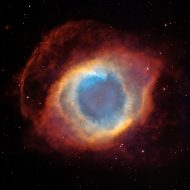By using Mobile Observatory app for Android, I found the optimal day to shoot Jupiter. The planet not only had to reveal the red spot, but it had to do so while being as high up in the sky as possible. Living in Toronto results in planets being lower in the sky. Planets that are closer to the horizon are behind more atmosphere, resulting in more turbulent, blurry images. Finally, I waited for good seeing and transparency conditions as indicated on the cleardarksky.com website.
Celeston C6N & AVX
QHYIII-224C
Televue 3x shot at around f20
The secret in getting detailed images of planets is a planetary camera. The problem with a DSLR as you probably know is getting a high frame rate. Also, the pixel size is usually slightly larger.
If you get a USB 3.0 camera, you can get very fast frame rates. Since you never shoot at full resolution (a planet usually never occupies more than 320×240 pixels), you get to increase the frame rate. Frame rate is directly related to your exposure setting. So if you keep your exposure at 5-10ms, you get between 100-200 frames per second. The trick is to lower the exposure as low as possible, and then increase the gain to reach a 75% histogram. Shooting using these planetary cameras is extremely easy, they are compatible with some very great software. Also, they double up as guide cams.
I shot this image at 140fps. But the camera can shoot much faster. I took about 6000 frames in 42 seconds. That way, I get very little rotation in the image. Finally, I only pick about 15% of the images, the best of the very best. And then I stack those. That way I get the clearest possible image, and at 15%, I’m still stacking 900 frames.
QHY224C is an amazing camera. The most popular one is ZWO’s ASI224, but not a lot of people know that the QHY224C has the same SONY sensor. The difference is that you also get a passive cooling design, and anti-amp glow, which is important for longer exposure shots.
For focus, there are many methods to focus. You can use a Bahtinov mask. I personally just focus on a star. Right now, Spica is close by, and so I slew to Spica, and using FWHM, I get the star as small as possible. It is very tricky, because the C6N focuser is really coarse, but at least it holds the focus well (since the focuser is stiff).
Last Updated on


